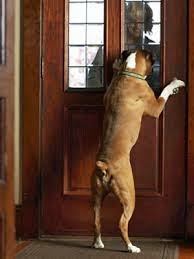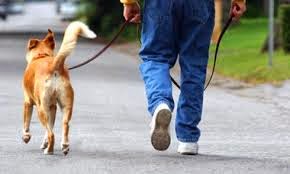Dog Training At Home
We are Faridabad (Haryana, India) based firm having a variety of dog and puppy training material in form of Books, Cds and DVDs you can train your dog at home. We serving our customers since 2007 we believe in providing you best quality of Dogs and Puppies Training Programs according to the costumer need, Breed of dog and Purpose Requirement.
Dog training at home is easy and effective way to train your puppy or dog. Every thing starts with you how u train your dog at home. When you train your dog yourself dog come to know your importance and regard you.
Importance of Dog Training
Dog Training plays an important role in the life of dog and his owner as they both are bounded and committed to each other. It is the same happiness you feel when your kid goes to pre-school and learn many thing. So it is the moral responsibility of a owner to train his dog step by step according to his aspirations.
Stages of Dog Training
There are different stages involve in dog training which starts from very first month with puppy socialization training then comes to puppy first year training after that dog training followed by advance dog training.
Why Dog Owner Should Impart Dog Training To His Dog ?
If you really love your dog do take some time for him to impart dog training. Its just sparing some for dog training 5 to 10 min in the binging which gradually increase time to time and according to willingness and self schedule. Remember dog respect the trainer as he starts giving more importance to you this the thing I hear from my costumers who impart dog training by there self some share there bad experience when they send there dog out on training for a month or so I came to here that there dog does not get good diet as he is getting some says there dog get sick after that dog training etc. I want to tell you why it happens ? Suppose you send your Dog on a dog training program and u paid a good amount of money actually its not a fault of dog trainer as he had to train many dogs so they are always in hurry and your dog never get time to rest and practice as every thing go too fast this is my experience that I came to know may be its not true every one have his other way of thinking.
What we can do for you before you buy a puppy or dog ?
We will help you and guide you about the type of dogs and help you in selecting an ideal dog for your Home, Factory, Hotel, Farm Houses, Dog Shows etc. We will pre-inform you about the social habits, eating habits, behavior with family, behavior with strangers, life expectancy and other traits of dogs.
If you still feel that you are unable to decide which dog you should buy we can provide you a book that can help you in deciding the best puppy for you with habits and traits you are looking for.
What we can do for you after you buy a puppy or dog ?
We will provide you best puppy / dog training Books, Cds and DVDs that can give you step by step guide to train your puppy or dog.
We also have various specified custom training program as you had seen on internet a very wide range of Books stars from Rs1000/- Cds and DVDs stars from 1500/- only.
When You Start Training ?
First you have to start the puppy Socialization training. When your dog turn to one month of age then basic atticates, manners, establishing your control, some basic commands and a feeling of belonginss should be realized in a proper way and many more things that are there for you and your puppy to learn in this very basic puppy training. Training also include some of best doctors advice that you have to take care off with your puppy.
What You Get In DOG TRAINING COMBO PACK ?
Puppy Socialization Training
All right you guys now have wonderful puppy in your home and now you are wounding what do i do ? Because some times when you start feeding puppy into your home it works really well and some times you may have some problems it may be chewing it may be housebreaking or kinds of things which you may have problems with your puppies and so it is difficult to melt them into your house. When you bring the puppy home he is thinking every thing changes he is not use to the enviournment he get over there and when you try to mold the puppy in human pack he is unable to get what is going around you think he will react as a human but he react as a dog. Puppy Socialization Training help you to bring the feeling of belongings in your puppy and to adjust in new enviournment in a friendly way it also help puppy to understand relation between puppy and you. You will also come to know what you have to restrict your puppy from and what you have to let him do. Puppy Socialization Training also helps you to get medical advice, Puppy diet, Puppy Potty, Puppy Toilet info etc more over if you take care of ur puppy according to this training your puppy age will increase by 2 years + and your puppy will never fell ill due to first six years intense care.
Puppy First Year Training
Owning a dog is fun !!! Your dog will become a friend guardian and companion to you and those who are around you but as a responsible pet owner you may know that you had made a serious personal and financial commitment. You may have a puppy right now who is starting to exhibit behavior due his breed which may or may not fit into your personality and lifestyle its up to you to try to train your pup so that he can fit into your world. Puppies first year is a video guide designed in five parts to help you to anticipate your puppys needs as he go thought critical stages in his first year of life. Some of you may have puppies and you start asking yourself why is my puppy jumping on me ? Why is he chewing my sleepers ? Why is he destroying my clothes ? We are going to tell you how to manage this problems and more... In Puppy First Year Training you will get all type of basic commands and exercise which make your puppy active and help in mental and physical growth it like a startup to your puppy make him learn while playing it is the best option to make him feel a touch of learning and improve the power of grasping with intelligence. Its really important to get a control over your puppy otherwise your puppy dominate you.
Puppy Obedience Training
Dog are pet animals in a dogs some dogs are alpha dogs once the establish leadership then other dogs are obedient to him. My balanced, step by step training methods proven to help establish leadership. When i train a dog I like to have "Working Bond" And "Love Bond" this means I am establish a leader of the dog as also I lake the dog. I dont be too stick or too lenient. The mythology i used is as follows :- First Part of the training is Teaching ===> Next Part of training is testing ===> Final part is Consistency its foundation work as it derives good results. Its a visual obedience training that after 5 weeks you get the out standing results with your dog for sure. Now you may want to know why obedience training is more important before a professional dog training it is because you make a control over your dog and dog start realizing that he had to obey you in all scenes weather willingly or not thats why obedience dog training play an important role in dogs training program. You must give a proper obedience training so that it will be very easy for you to impart dog training without any conflict. Hope you got my point best of luck. Thanks
Professional Dog Training
Professional Dog Training contain all the information that you need to control your dog in any situation the quality of dog lies not only the efforts you put in working with him but also techniques applied. Dog training is not a so much matter of training a dog but training yourself to understand what it takes to be respected as a leader in your dog mind. A well trained dog is one who get more freedom, exercise and affection during his life because the owners are happy with him and can trust there dog will respond when absolutely necessary. A properly trained dog will be happier and help you through out your life. My methods will instruct you how to honest the dog. Every dog is much smarter then most of us had even realize the reason people think that there dog is not very smart is not that the dog is lacking intelligence but the dog does not have respect for the owner as its leader. This is why you can be calling your dog and instructing them through dog trainer and dog seem to disregard his owner. We first must understand genetic makeup of the dog having knowledge of the way have been created to think make possible for us to deal in a manner which achieve results.
Visiting our website :- http://dog-training.co.in/
http://best-dogs-deals.com/
Our Blogs :- http://best-dog-training-books.blogspot.in/
http://best-puppies-training.blogspot.in/
http://bestdogsdeals.blogspot.in/
You Can E-Mail Us At :- bestdogsdeals@gmail.com
Call Us At :- +91 - 9350926445
Office Land Line Number :- +91 - 0129 - 3220824















